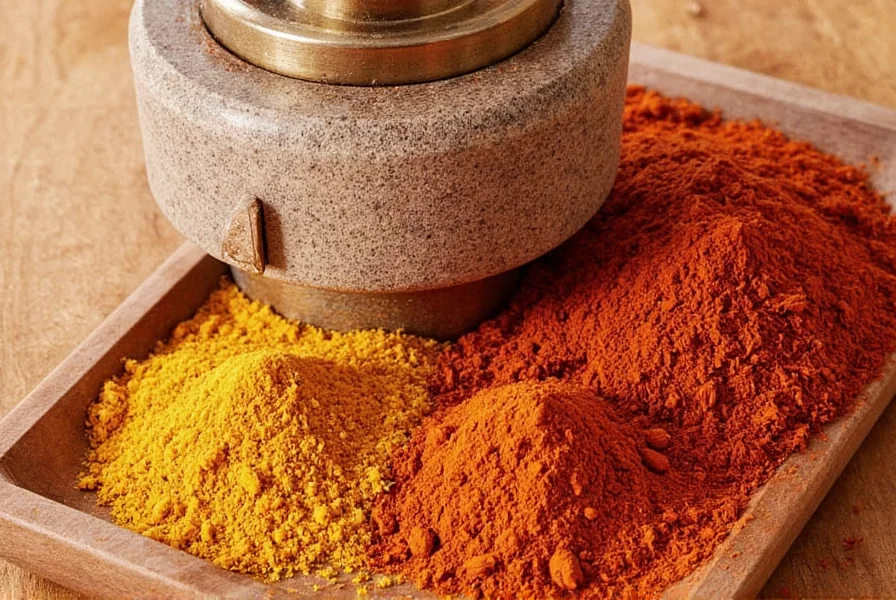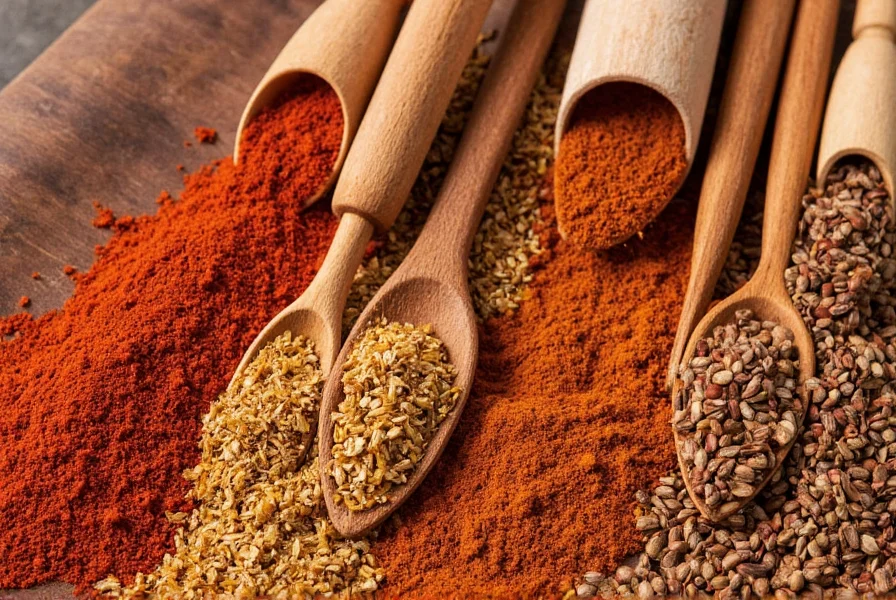Grinding your own spices transforms ordinary dishes into extraordinary culinary experiences. Freshly ground spices release volatile oils that create more complex, vibrant flavors compared to pre-ground alternatives that lose potency during storage. Whether you're preparing an aromatic curry, baking spiced cookies, or crafting the perfect rub for grilled meats, understanding how to grind spices properly makes all the difference in your cooking.
Why Freshly Ground Spices Outperform Pre-Ground Options
Whole spices maintain their essential oils and aromatic compounds far longer than pre-ground varieties. When you grind spices just before use, you access their full flavor potential. Scientific studies show that ground spices lose up to 40% of their volatile compounds within six months of grinding, while whole spices retain flavor for up to two years. This difference becomes particularly noticeable with delicate spices like cardamom, nutmeg, and cumin where the aromatic profile defines the dish.
Essential Tools for Grinding Spices at Home
Choosing the right grinding equipment depends on your cooking frequency, spice types, and kitchen space. Each method offers distinct advantages for different culinary applications.
| Grinding Method | Best For | Grind Consistency | Cleaning Difficulty |
|---|---|---|---|
| Mortar and Pestle | Small batches, delicate spices | Variable (user-controlled) | Easy |
| Electric Spice Grinder | Regular use, consistent results | Uniform fine powder | Moderate |
| Dedicated Coffee Grinder | Quick grinding, harder spices | Consistent medium-fine | Moderate |
| Blender/Food Processor | Large batches, coarse grinding | Less consistent | Difficult |
Step-by-Step Guide to Grinding Spices Properly
Using a Mortar and Pestle (Traditional Method)
This ancient technique gives you complete control over texture. Start with a heavy granite mortar (avoid lightweight ceramic). Add small amounts of spice (1-2 tablespoons) to prevent scattering. Use a circular grinding motion with firm pressure, rotating the pestle to crush spices against the mortar's sides. For harder spices like cinnamon or nutmeg, toast them lightly first to enhance flavor release. This method works exceptionally well for how to grind cardamom pods at home as it preserves the delicate inner seeds.

Electric Spice Grinder Technique
For consistent results with minimal effort, electric grinders deliver professional quality. Always ensure your spices are completely dry—any moisture causes clumping. Fill the grinder no more than halfway to allow proper circulation. Pulse in 5-second intervals with 10-second rests to prevent motor strain and overheating. Between different spices, run a tablespoon of uncooked rice through the grinder to eliminate flavor transfer. This approach is ideal for how to grind hard spices like cloves and allspice berries efficiently.
Coffee Grinder Method (Dedicated Unit)
If you have a spare coffee grinder reserved exclusively for spices, it becomes an excellent grinding tool. The key is never to use your regular coffee grinder for spices unless you want your morning brew tasting of cumin! For best results with a coffee grinder, freeze spices for 15 minutes before grinding—this makes brittle spices like coriander and fennel easier to pulverize. Use short bursts (3-4 seconds) and shake the grinder between pulses to redistribute spices. This technique answers the common question about electric spice grinder vs coffee grinder differences for home use.
Spice-Specific Grinding Recommendations
Not all spices respond the same to grinding methods. Understanding these nuances helps you maximize flavor in your dishes:
- Hard spices (cinnamon sticks, nutmeg): Toast lightly before grinding; use electric grinder for fine powder or mortar for coarser texture
- Seed spices (cumin, coriander): Dry roast first to enhance flavor; mortar works well for texture control
- Delicate spices (saffron, cardamom): Use mortar and pestle with gentle pressure to preserve volatile compounds
- Chili peppers: Wear gloves when handling; remove seeds first for less heat; use dedicated grinder to avoid cross-contamination
Proper Storage of Freshly Ground Spices
Even perfectly ground spices lose potency without proper storage. Transfer ground spices immediately to airtight glass containers with UV protection. Store in a cool, dark cupboard away from heat sources—never above your stove. For maximum freshness, use within 3-6 months (sooner for delicate spices like basil or tarragon). Label containers with grinding date to track freshness. This addresses the important consideration of freshly ground spices storage tips that many home cooks overlook.
Common Mistakes to Avoid When Grinding Spices
Many home cooks make these critical errors that compromise spice quality:
- Grinding too much at once (spices degrade quickly after grinding)
- Overheating spices through prolonged grinding (destroys volatile oils)
- Using the same grinder for strongly flavored spices without proper cleaning
- Storing ground spices in transparent containers exposed to light
- Grinding wet or improperly dried spices (causes clumping and mold)
For those wondering how to clean spice grinding equipment properly, run uncooked rice through the grinder until it comes out clean, then wipe with a dry cloth. Never use water on electric grinders as it damages motors and creates mold risks.
When to Grind Spices Before Cooking
Understanding which spices should be ground before cooking enhances your culinary results. Generally, hard spices benefit from pre-grinding to release flavors during cooking, while delicate herbs often work better added whole and crushed at the end. Whole spices like bay leaves or cinnamon sticks can infuse dishes during cooking, then be removed before serving. For rubs and spice blends, always grind components together for uniform flavor distribution. The exception is garam masala and similar blends where toasting whole spices before grinding creates superior complexity.
Frequently Asked Questions
Can I use my coffee grinder to grind spices?
Yes, but only if you have a dedicated coffee grinder exclusively for spices. Never use your regular coffee grinder for spices unless you want your coffee tasting like cumin. Clean thoroughly between different spice types by grinding uncooked rice until it comes out clean.
How fine should I grind spices for cooking?
Grind consistency depends on your recipe. For curries and sauces, a fine powder works best. For rubs, a medium grind provides texture. Delicate spices like cardamom often benefit from coarse grinding to preserve volatile oils. Hard spices like nutmeg should be ground fine for even distribution.
Why do my ground spices lose flavor so quickly?
Ground spices lose flavor rapidly due to exposure to air, light, and moisture. The increased surface area accelerates oxidation of essential oils. Store freshly ground spices in airtight, opaque containers in a cool, dark place, and use within 3-6 months for best results.
Should I toast spices before or after grinding?
Toast whole spices before grinding for maximum flavor release. The dry heat enhances aromatic compounds that get locked in during grinding. Never toast already ground spices as they burn easily. Allow toasted spices to cool completely before grinding to prevent steam from causing clumping.
How can I prevent cross-contamination between different spices?
Use separate grinders for strongly flavored spices like chili and cumin. Between grinding sessions, run uncooked rice through the grinder until it comes out clean. For mortar and pestle, wash thoroughly with warm water (no soap) and dry completely before next use. Never use soap on grinding equipment as it leaves residual flavors.











 浙公网安备
33010002000092号
浙公网安备
33010002000092号 浙B2-20120091-4
浙B2-20120091-4